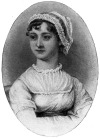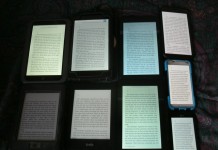 This article reminded me of the NPR piece on e-books we mentioned the other day. In that piece, various talking heads suggested that e-books were changing the way in which we read, and hence the way in which authors would have to write from now on.
This article reminded me of the NPR piece on e-books we mentioned the other day. In that piece, various talking heads suggested that e-books were changing the way in which we read, and hence the way in which authors would have to write from now on.
On O’Reilly Radar, Sarah Milstein talks about the similar assumption that Twitter, email, and other instant, small-chunk communication methods are something entirely new and different and changing the way in which we communicate.
Milstein reminds us that in the 19th century, the mail was delivered in Victorian England as many as six times a day. (Found via BoingBoing.)
[Jane] Austen wrote more than 3,000 letters, many to her sister Cassandra. They corresponded constantly, starting new letters to each other the minute they finished the last one and sharing the minutia of their lives.
If e-mail and Twitter had existed back then, the Austens would probably have been using them enthusiastically.
We assume today that instant, frequent communication is something unique to our generation. But past generations had it more frequently than we expected, if not instantly.
Likewise, e-book readers may change some readers’ habits, but the things they are reading will remain the same—including the public-domain titles by Jane Austen that are available at Feedbooks and Manybooks.
































The central difference is that we have the Austen letters, had they been tweeting, chatting and emailing, we would have no record from their correspondence. This will be the lament of future historians and biographers; no paper trail. Yes, I know, there are some sites trying to archive things off the internet, but they will collect only the tiniest fraction of what was said and done in this digital age.
On the other hand, we wouldn’t have the letters either if they’d been caught in a house fire, or deemed not important enough to keep.
Perhaps toward the end of the nineteenth century mail was delivered six times a day, but this certainly was not the case in Jane Austen’s time. She died, as I recall, in 1817 well before the modernization of the English mails.
The Wikipedia states:” In the United Kingdom, prior to 1840 the postal system was expensive, confusing and seen as corrupt. Letters were paid for by the recipient rather than the sender, and were charged according to the distance the letter had travelled and the number of sheets of paper it contained. If there is one man who can be said to have changed the face of the postal service forever it is Sir Rowland Hill, with his reforms of the postal system based on the concept of penny postage, and his solution of pre payment. ] In his proposal Hill also called for official pre-printed envelopes and adhesive postage stamps as alternative ways of getting the sender to pay for the postage, at a time when prepayment was optional, which led to the invention of the postage stamp, the Penny Black.”
Let’s remember that even in the heyday of the Victorian postal system, it was only available to those who were literate (a much smaller percentage than today, naturally), those who had time to write (again, smaller) and those who could afford the mails. I daresay it’s likely that fewer people in those days could pay for regular postage than have access to the Internet today. Different standards.
@GJN: In my original post (on Radar), I explained that the Austen show at the Morgan Library has a display showing that mail was multi-daily during Austen’s time, and I provide a link with more info on 18th and 19th century mails. The rest of the details you mention–costs, distance, folded rather than stuffed, etc–are on the money and were evident in the show.
It’s not totally true to say that, despite changing from paper books to ebook devices, “the things [people] are reading will remain the same.” Having a device has made me read many more short stories than I would have bought magazines or anthologies. I’ll also try freebies from new authors I wouldn’t have gambled money on in print, and read older authors whose works I wouldn’t have tracked down in paper format.
Heck, the Brits had multiple deliveries per day well into the 20th Century. I recall reading a Dorothy L. Sayers novel where a character was always “waiting for the next post” until the last one of the day finally arrived. As far as the Victorians, telegrams were closer to email than letters. Someone even wrote a book about it called The Victorian Internet. As someone has pointed out, both required a certain amount of income.
Sadly, Jane Austen’s sister burned most of her letters after she died. Even then, she left quite a lot of them. One of her earliest fiction efforts, Lady Susan was written as an epistolary novel.
Very interesting blog. Pity about the picture of Jane Austen though.
Sadly Jane Austen died in 1817. Queen Victoria did not ascend the throne until 1836!